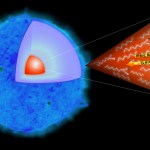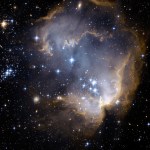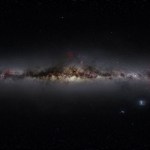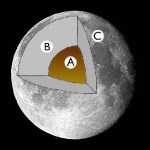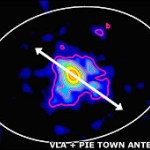formation
New research provides more evidence of how birds conserve energy by flying in a "V" formation:
"It is by going down into the abyss that we recover the treasures of life. Where you stumble, there lies your treasure." -Joseph Campbell
Ever since we created a question/suggestion box here, we've been deluged by far more excellent questions than one person could possibly answer, but that doesn't mean we aren't trying! For this week's Ask Ethan, our question comes from long-time fan and reader crd2, who asks:
As we look at the furthest quasars we see they have supermassive black holes, as large as 109 solar masses. By what mechanism are they able to reach such large sizes over so short…
“I have announced this star as a comet, but since it is not accompanied by any nebulosity and, further, since its movement is so slow and rather uniform, it has occurred to me several times that it might be something better than a comet. But I have been careful not to advance this supposition to the public.” -Giuseppe Piazzi
So it begins again: the neverending debate about who gets to be a planet and who doesn't. Everyone can bring their own interpretation of the science to the table -- and everyone has their own preferred naming scheme -- but when I think about the Solar System, I try…
“Aristotle taught that stars are made of a different matter than the four earthly elements— a quintessence— that also happens to be what the human psyche is made of. Which is why man’s spirit corresponds to the stars. Perhaps that’s not a very scientific view, but I do like the idea that there’s a little starlight in each of us.” -Lisa Kleypas
Ah, but what if you did want the scientific view of starlight? After all, it's through the very stars themselves that we've unveiled some of the greatest secrets of the Universe.
Image (mosaic) credit: Nick Risinger.
But while the stars of the…
"You must learn to talk clearly. The jargon of scientific terminology which rolls off your tongues is mental garbage." -Martin H. Fischer
I've always thought that the Universe is absolutely amazing; that everything from the tiniest indivisible particles all the way up to the largest structures and superstructures making up the Universe has an amazing story to tell, if only we can figure out its secrets.
Image credit: Boylan-Kolchin et al. (2009) for the Millenium-II simulation; MPA Garching.
When I first learned some of them for myself, I was a graduate student, immersed in the minutiae and…
"Black holes, which have no memory, are said to contain the earliest memories of the universe, and the most recent, too, while at the same time obliterating all memory by obliterating all its embodiments. Such paradoxes characterize these strange galactic monsters, for whom creation is destruction, death life, chaos order." -Robert Coover
Our Milky Way, the swath of light and dark that dominates the darkest skies here on Earth, contains a huge variety of stars: large and small, red and blue, from young to old to ancient.
Image credit: ESO / Serge Brunier, Frederic Tapissier, The World At…
"This seems to be the law of progress in everything we do; it moves along a spiral rather than a perpendicular; we seem to be actually going out of the way, and yet it turns out that we were really moving upward all the time." -Frances Willard
As spring gives way to summer here in the Northern Hemisphere, one of the most beloved sights of the night sky becomes ever more prominent: the Big Dipper.
(Image credit: NASA, ESA, Z. Levay (STScI) and A. Fujii.)
These seven bright stars shine high above the horizon after sunset, and will continue to do so over the rest of the Spring and all Summer…
Just a few of the many hoodoos which can be seen in Bryce Canyon National Park, Utah.
But I didn't want one! Stop your whining, Earthlings. We have a serious question to answer, courtesy of Tamara:
What’s the moon like below its surface, moving into the interior? And what’s the current thought on its formation?
Well, we do know a lot about the Moon's insides the same way we know about the Earth's; just like the Earth has earthquakes, the Moon has moonquakes. These tell us about the Moon's interior. From back when we landed on the Moon, we planted the Apollo seismic experiments and saw 28 moonquakes. From these, we learned that the Moon has a crust about 60 km deep, a deep…
Starts with a bang reader Dumb Ass Dave points us to this BBC article about the discovery of a planet that's only just forming around a new star. The planet is surely less than 100,000 years old, although the 1,600 year old figure quoted in the article is probably hogwash.
How do you find it? Take a look at this picture below, taken in radio waves:
That big blurry thing in the center? That's a newly forming star, with a proto-planetary disk around it. But see that little blob in the upper right? That's a planet forming up there! When they do their analysis and determine its mass, it turns…
